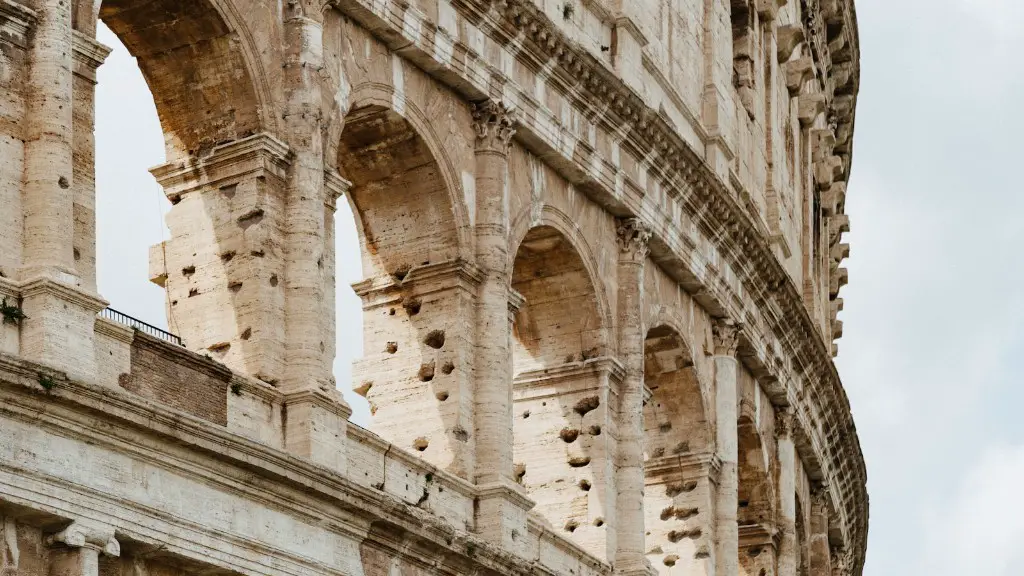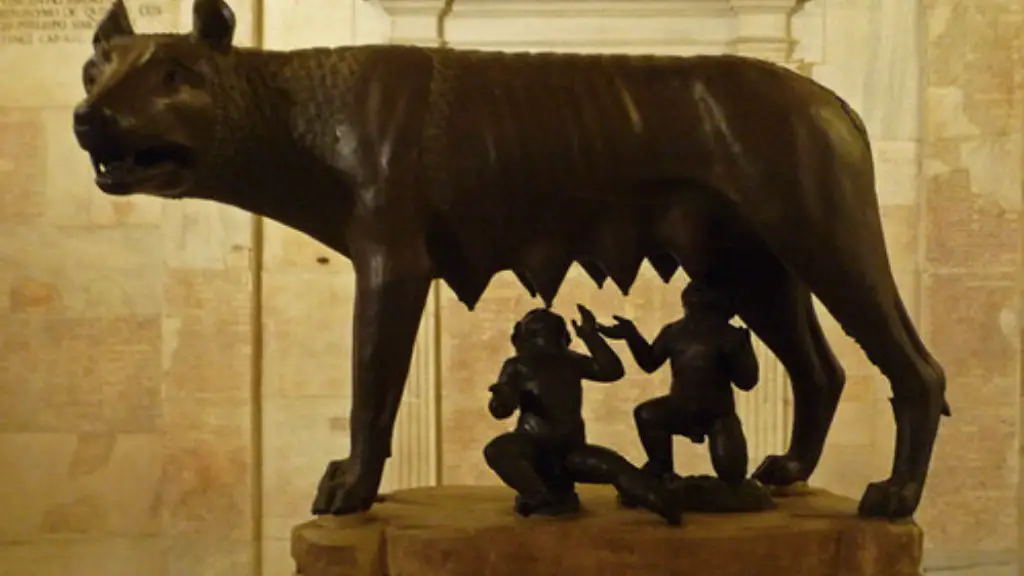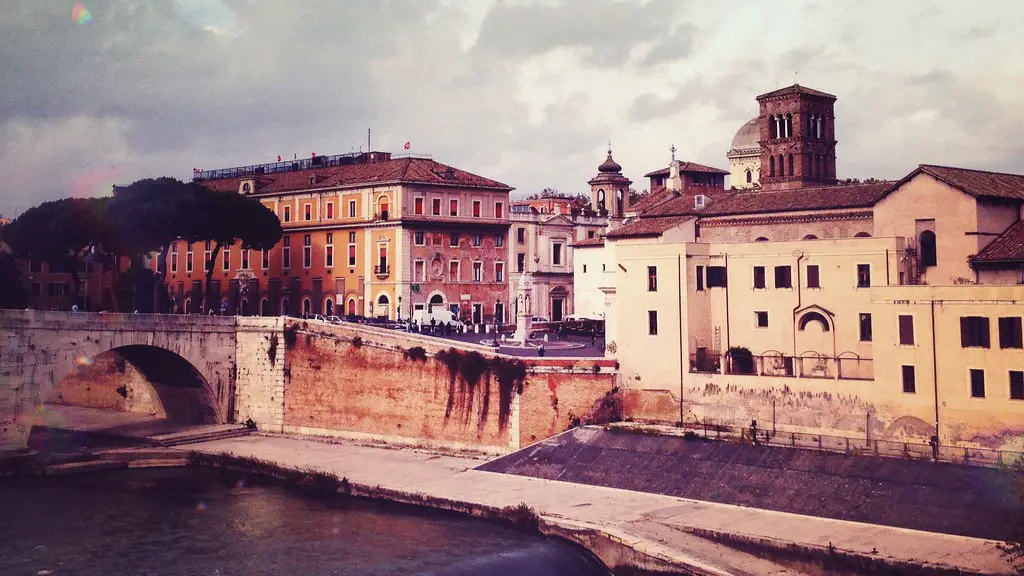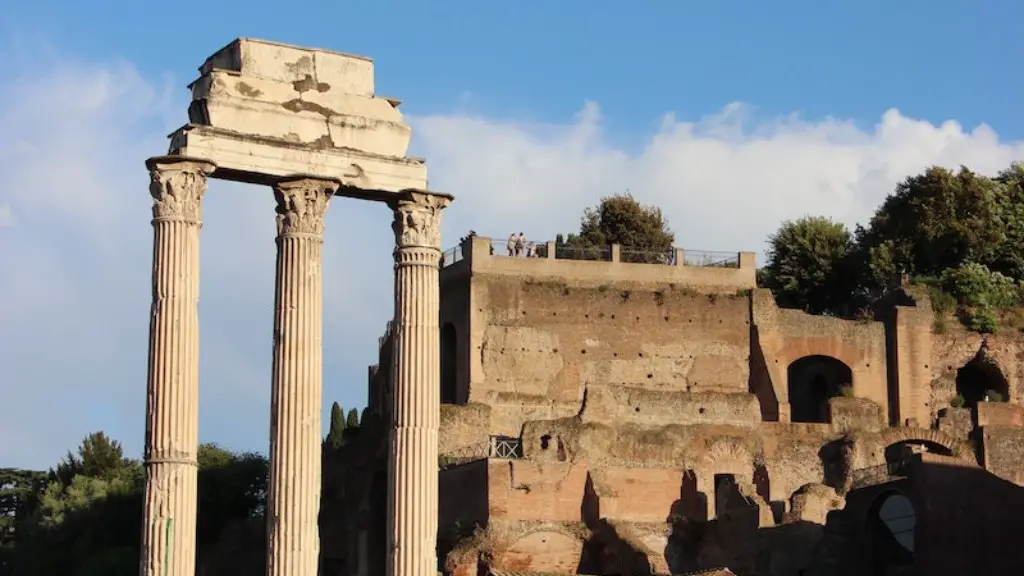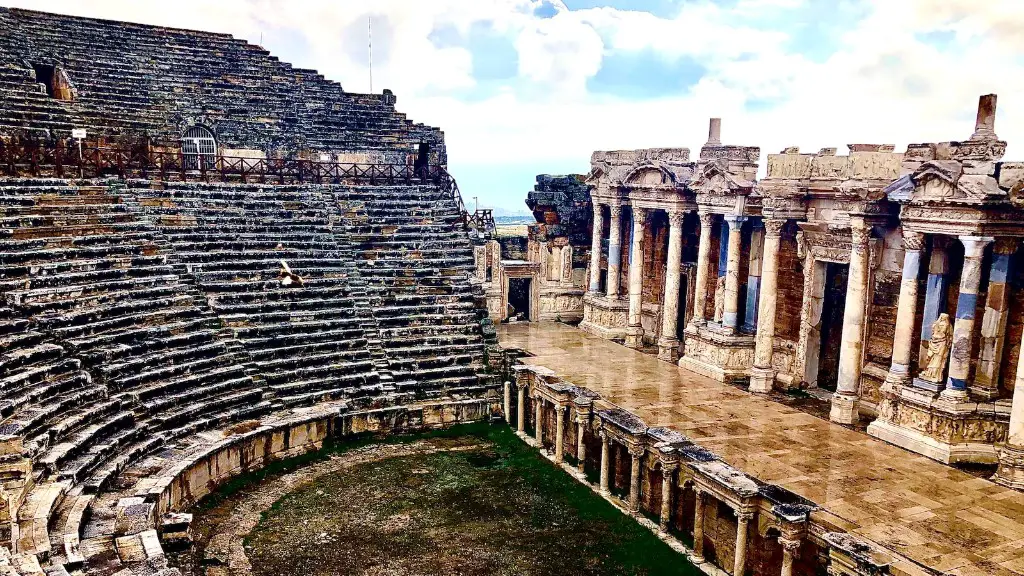Religion in ancient Rome was deeply rooted and intertwined with the culture and everyday life of the city. It was a mix of traditional beliefs and rituals, often tied to a particular deity or family and was an important part of the state-sponsored religion.
The religion of ancient Rome had its origins in the Etruscan religion, which in turn was based on the beliefs and practices of the ancient Greeks. The most important gods in Roman religion were the twelve primary gods known as the ‘Olympians’, headed by their king, Jupiter. The other gods were numbered among Jupiter’s court, as well as a variety of minor divinities.
The pantheon of gods was kept in sync with the spiritual aspirations of the people through the practice of religious festivals, such as the Lupercalia and Saturnalia. These festivals could serve as times of offering prayers and sacrifices to the gods, or as occasions to honor the gods with dynastic celebrations, or to benefit various segments of society. This practice allowed the people to maintain a strong connection with the gods, and their proximity and power in their daily lives.
The gods held an important role in Roman life, but so did the family. Roman families held particular shrines to certain gods such as the Lares, who were the protective gods associated with the family, as well as household gods such as the penates, who were gods of storage and food. In addition, every household contained a Lararium, a small shrine to their particular gods which contained images of them and offerings.
Religion was no less important outside the home. Every corner of the city contained some kind of religious memorial or structure. Rome was filled with temples, dedicated to a variety of gods and goddesses, where the people could come and make offerings and pray. Frequently, these temples contained statues or other depictions of gods, in addition to religious artifacts used in public ceremonies such as the Lupercalia.
For Roman children, religion was a central part of their lives. It was expected that children would take part in family religious rituals, visit temples with their parents, and take part in the appropriate festivals associated with their gods. This could be seen in the fervor displayed by children during the Saturnalia or the rites of worship during Lupercalia.
Roman religion was a complex mixture of deities, rituals, ceremonies, magical spells, and superstitions. It was an important part of Roman culture and played an important part in the life and education of Roman children. By understanding the religious beliefs of their ancestors, Roman children could better comprehend the world around them and their place in it.
Relevance of Religion
In ancient Rome, religion was an element of everyday life. There were gods and goddesses to honour, rituals and festivals to celebrate, and family shrines to acknowledge. This religious culture was passed down from generation to generation, each elaborating the religious experiences of the previous.
Religion gave the Roman children a sense of identity and historical continuity. They were able to participate in the religious customs of their forebears, honouring the gods that had been venerated by their ancestors and linking them to the great heritage of Roman civilisation.
Religion also provided Roman children with a moral code. It implanted in them a sense of good and evil, of right and wrong, and gave them guidance on how to be responsible citizens.
Moreover, religion was a source of education and knowledge. By participating in religious ceremonies and rituals, children learned about their gods and goddesses and about the history and literature associated with them. This gave Roman children an appreciation for Rome’s past and a better understanding of the world around them.
Finally, religion was a source of comfort and hope. Through prayer, worship and offerings, Roman children could seek guidance and protection from their gods. This allowed them to live their lives with courage and confidence, and to face the challenges of their world.
Relationship with Christianity
With the advent of Christianity, the religion of ancient Rome began to decline. By the fourth century CE, Christianity had become the recognised religion in the Roman Empire and, as such, was given official status.
Roman religion did not disappear overnight; rather, elements of it were slowly absorbed into Christianity. This included the traditional gods and goddesses, who were replaced by Christian saints, the veneration of relics, and the use of incense or candles during worship.
The rituals associated with Roman religion were also transformed. One example is the Saturnalia, which eventually evolved into the modern-day Christmas celebration. In the same way, Easter began as a celebration of the goddess Eostre, before being absorbed into the Christian festival of Easter.
Perhaps the most significant manifestation of this evolution can be seen in the architecture. The ancient temples of Roman gods were converted into Christian shrines. Even today, the Basilica of St. Peter’s, one of the most important Christian churches in the world, stands on the site of the temple of the Roman god, Jupiter.
The evolution of Roman religion into Christianity led to Christianity becoming the dominant religion in the region. However, elements of Roman religion still remain and can be found in the folklore and local customs of the country.
Rituals and Customs
Religion in ancient Rome was marked by various customs and rituals. This could include offerings and sacrifices made to the gods in return for their favour, such as incense and libations, as well as public processions and festivals.
Divination was also an important part of Roman religion. By seeking the gods’ advice, citizens were able to determine the course of their future. The Roman pantheon was full of gods and goddesses who could be used as oracles, such as Apollo and Minerva, who could provide prophecies and advice.
Animal sacrifice was also used in Roman religion. This was seen as a way of thanking the gods for their blessings and as a mark of respect for the gods’ power. In addition, the ritual of animal sacrifice was believed to bring about good fortune and prosperity for the people.
Finally, Roman religion also involved superstitions and magical spells. This included a belief in good and bad omens, as well as an interest in magical rituals and charms intended to ward off bad luck and evil spirits.
Modern Significance
The religion of ancient Rome is still relevant today, despite the fact that it has been long supplanted by Christianity. Elements of the Roman pantheon continue to resonate in the culture and folklore of the region, and its rituals and customs can still be seen in modern-day Italy.
In addition, the religion has also left a lasting legacy in the wider world. It has contributed to the development of modern religions, such as Christianity and Islam, and many of its gods and goddesses live on in the perceptions of the world today.
The religion of ancient Rome is also an important reminder of how religion evolves over time. By taking into account the changes and development of religious beliefs over time, we are able to better understand our own culture and religious traditions, as well as that of others; and this understanding can help us to build a better future.
Impact on Kids
For Roman children, religious beliefs and practices were a central part of their lives. They were exposed to rituals, superstitions and traditions from an early age and this instilled in them respect for the gods, for their culture and for traditions.
The legacy of ancient Rome’s religion also taught Roman children a moral code of behavior, as well as offering them guidance and protection. This could be seen in the respect they held for their gods, and in their observance of rituals, superstitions and traditions, all of which instilled in them an appreciation of Art, Literature, History and the wider world.
For today’s children, the religion of ancient Rome is a source of inspiration and wonder. By learning about this ancient religion, they are able to gain an appreciation of the rich culture of Italy and the world and to understand more about the past and its impact on the present.
In this way, the religion of ancient Rome can still be an important part of modern life, giving children and adults alike an understanding of the role of religion in human history and a greater appreciation for its enduring relevance in today’s world.

